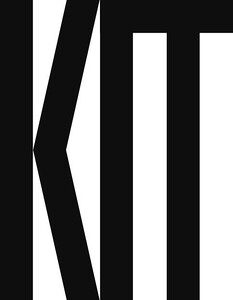Tremors
March 11–June 11, 2017
Mannesmannufer 1b
40213 Düsseldorf
Germany
T +49 211 8920769
A room like a stage, secluded from the everyday. Dull colored light, noises from technical apparatuses, a slightly chemical smell, shapes and contours that condense in the light as you approach: a leg, an arm, dangling head fragments, projection screens.
Where is Malte Bruns taking us with this exhibition that follows the artist’s gaze back to the era of the industrial revolution and, at the same time, his future-oriented view of the digital age? Are we in an anatomical panopticon, a freak show, a laboratory of genetic engineering? Or are we in a special-effects studio in Hollywood where props for cheap science fiction films are made? The “making of” atmosphere is reminiscent of formats like the Teenage Mutant Ninja Turtles or, as the exhibition’s title suggests, films like Tremors, made in the nineties in the USA. The movie, which became a cult classic of the “horror trash” genre, is about large subterranean, man-eating worms and combines two elements that are essential to Malte Bruns: the body and pop culture. At the same time, Tremors also invites another reading. Medically speaking, a tremor—from the latin “tremere,” meaning “to tremble”—describes an involuntary, rhythmically repeating contraction of mutually opposing muscle groups.
The visitor is confronted with larger than life, expressionless faces, discovers torsos and extremities, sees rope fibers which lie visibly beneath the artificial skin like a network of blue veins and connects it with deeper layers. These are materials from the hardware store, which Malte Bruns uses to propagate his own manual work in relation to craft. He is pointedly setting himself up in opposition to the prosthetics industry’s attempts at perfection, whereby the main objective is to depict the flawless human organism. His body parts are open, posed, even grotesque anatomical pictures. They create half-truths by misrepresenting human physiognomies. “What I’ve found are puzzles that you don’t want to solve,” says Malte Bruns about his designs. He seems to be playing on a moment of indissolubility, in which something unconcluded releases tension and curiosity, provoking reactions. To this end, he brings the body into comic situations. A foot that bends the wrong way, that is, against the joint, is indeed bizarre. But at the same time, it is also frightening. Transhumanism allows us to consider such possibilities, and cyber technology makes them real. Malte Bruns’ foot flirts with this realization. The mechanics are exposed and offer insights into the future of human medicine.
The fear of the human body’s decay and the handling of the primal anxieties has always been a great subject in science and art. For the artist, his own body is “the first material”; it is always available, demanding to be disfigured, fragmented and concealed. Dissolution and (re)creation are also important elements in the works of the Surrealists, for example. Think of how scenes from Un Chien Andalou (1929) shocked audiences. Marcel Duchamps Étant donnés, Hans Bellmers’ Puppen des Bösen, and Cindy Sherman’s subsequently inspired images—Malte Bruns is a part of a tradition of artists and writers that have been attracted to the artificiality of humanity, and the homunculus, for centuries, beginning with Adam, as the first religious artificial man, through E.T.A. Hoffmann’s Olimpia in The Sandman, Mary Shelley’s Frankenstein, and others.
The fragmentation and artificiality of these characters, which persists in popular culture in cyborgs like Star Wars’ Darth Vader and Luke Skywalker, are constitutive of their status as metaphorical figures that no longer allow a distinction between machine and organism, between art and nature. Although fictional, they are firmly anchored in the collective memory of the cultural community and influence our encounter with Malte Bruns’ works.
In contemporary everyday life, visible prostheses and crutches have almost disappeared while self-optimization processes have become prevalent in their stead. Destiny has been exhausted, and the body has finally been transformed from a site of nature into a site of technology. How far can this go? This seems to be the question Malte Bruns is asking when he presents body parts for observation on overly complicated tables made of grilled surfaces on crutches, transforming presentation surfaces into a personalized part of the installation.
It becomes clear that Malte Bruns wants to seduce us into interpreting things openly. We shouldn’t look for answers and explanations but rather be amazed, laugh, feel disgust, accept the absurd and face the inconceivable. The appearance of Hale-Bopp—Endgegner is so starkly opposed to the idea of the beautiful and sublime that the head’s ugliness would be embarrassing were it not so full of inspiring cheerfulness. Ugliness always contains something positive, something that pulls us out of our homely feeling of security and lets us see the supposedly beautiful and perfect anew. When the uncanny feelings set in, the colors in the KIT that blend man and machine, reality and surreality, contribute to a scenario in which the merciless “all well and good” aesthetics of our time are suspended for a moment.
Curated by Gertrud Peters


